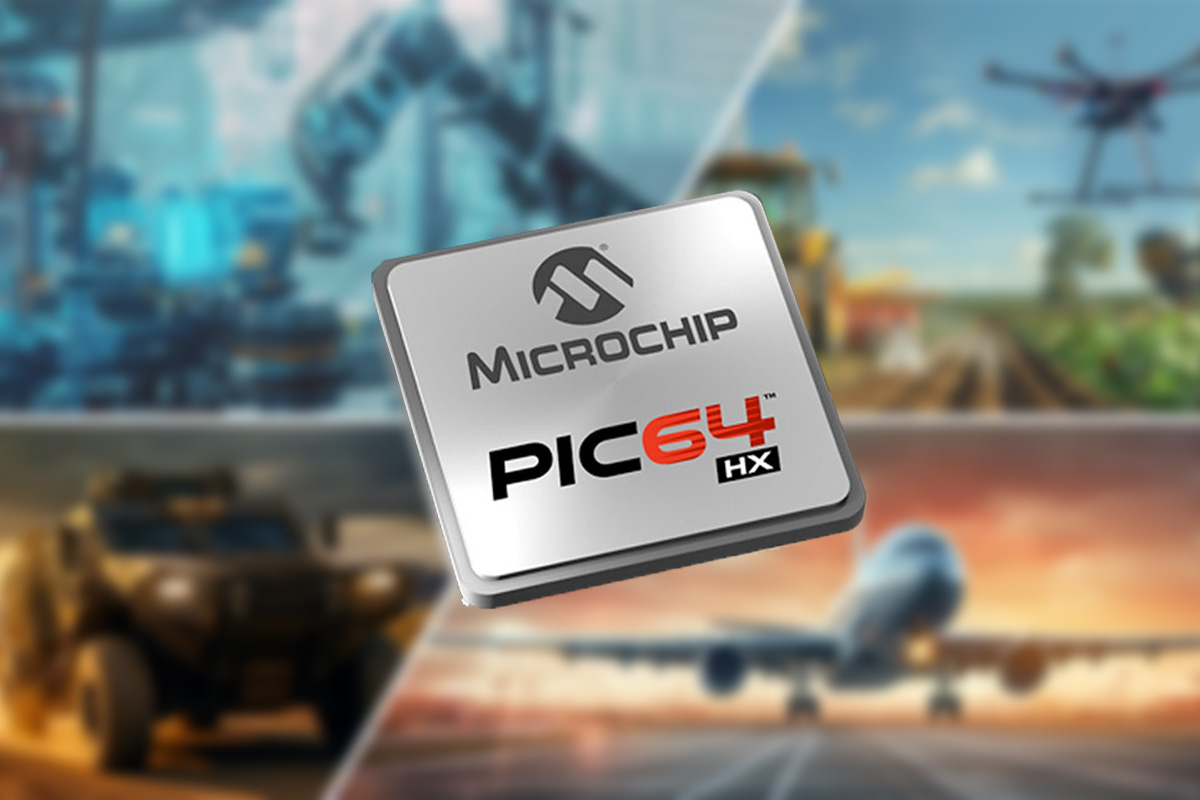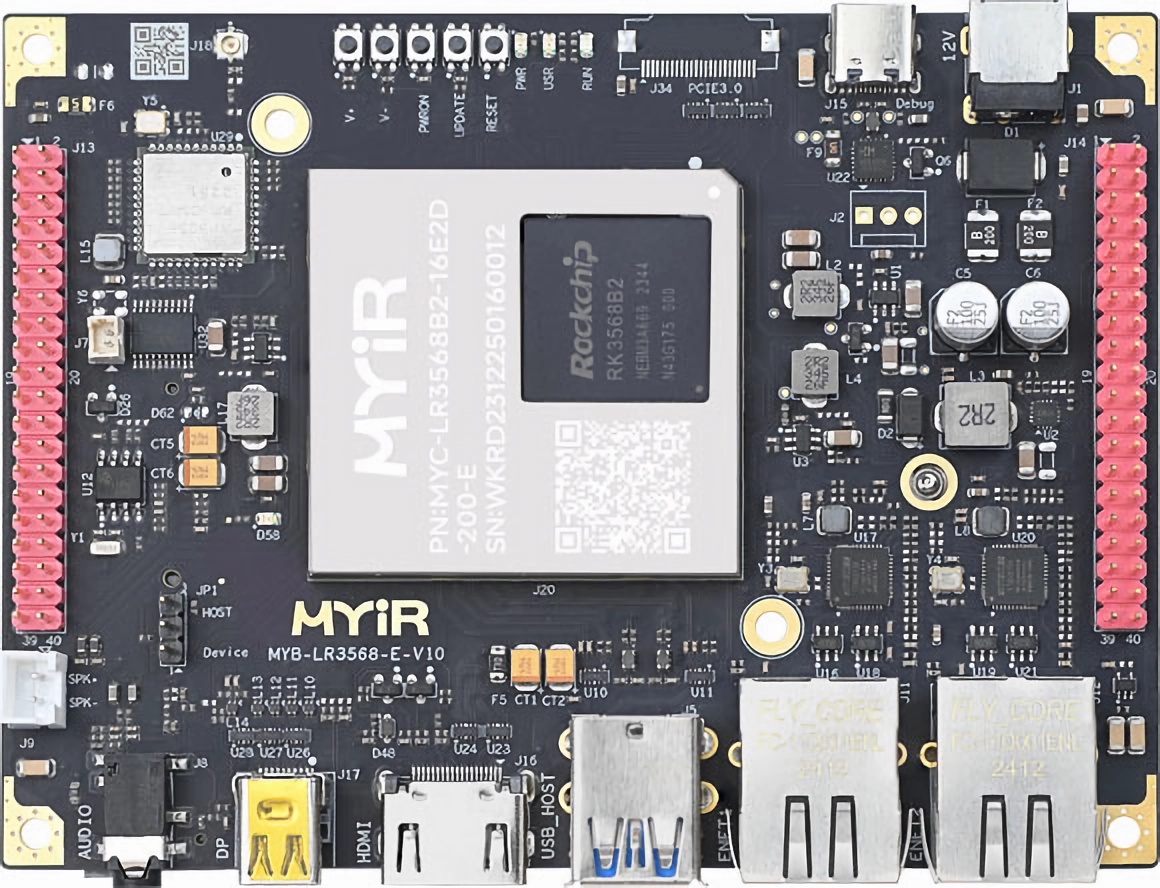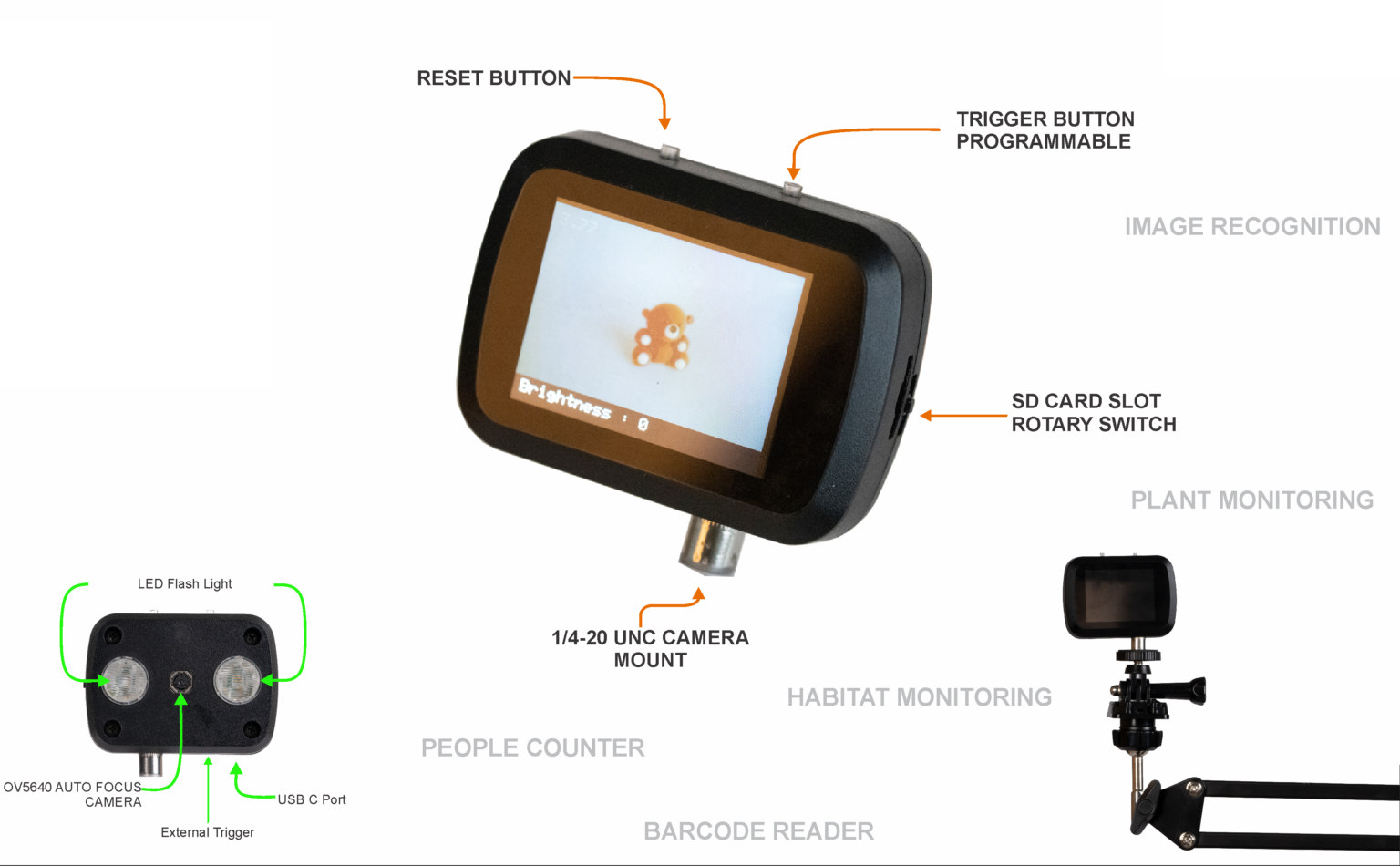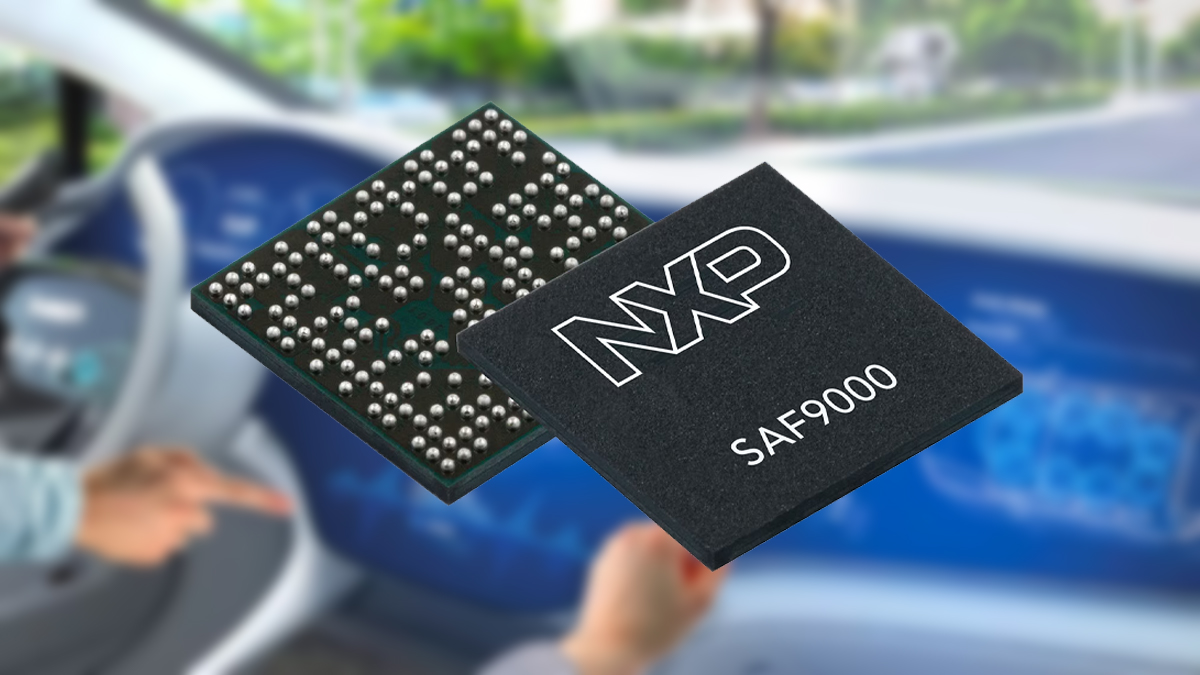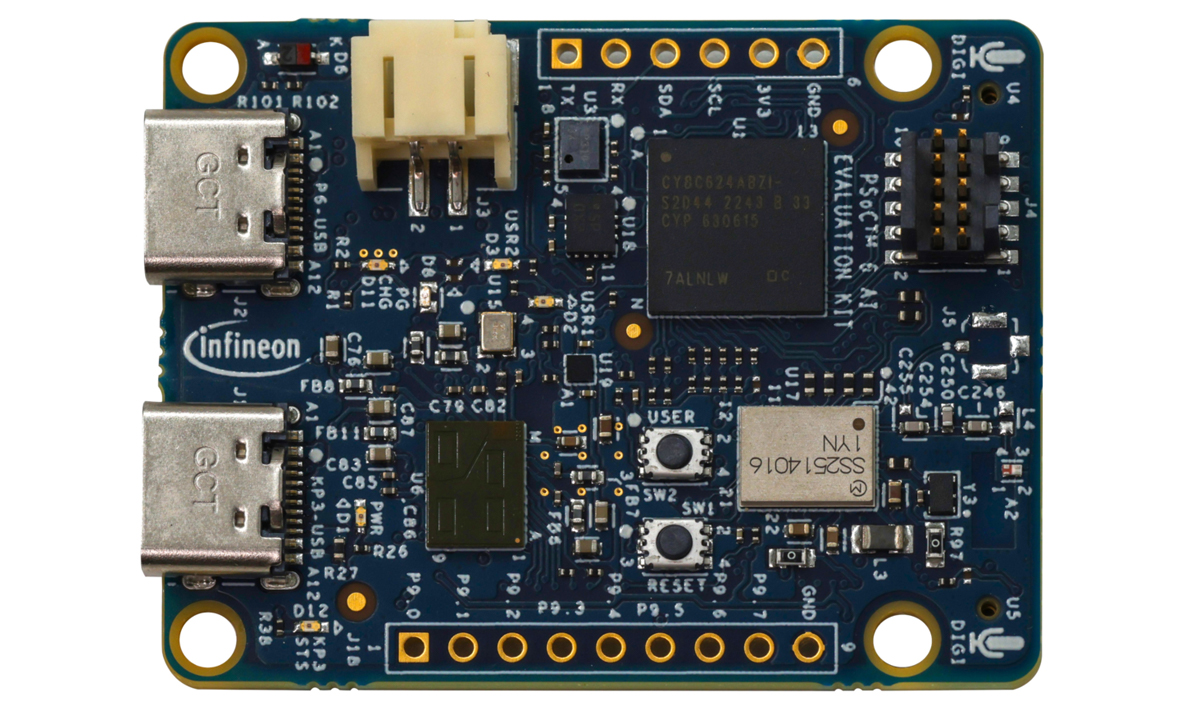Microchip recently unveiled the PIC64HX1000 64-bit RISC-V AI microprocessor (MPU) family designed for mission-critical intelligent edge applications in the aerospace, defense, industrial, and medical sectors thanks to a quantum-resistant design. These new MPUs feature eight SiFive’s Intelligence X280 cores, each clocked at 1 GHz. The MPUs are engineered with a decoupled vector pipeline enabling 512-bit operations enabling the PIC64HX1000 to achieve up to 2 TOPS for AI/ML processing and come equipped with integrated Time-Sensitive Networking (TSN) Ethernet connectivity. This new microprocessor includes a dedicated system controller for runtime monitoring and fault management, WorldGuard architecture for workload isolation, and post-quantum defense-grade cryptography, which includes the NIST-standardized FIPS 203 and FIPS 204 cryptographic algorithms, ensuring protection against future quantum computing threats. PIC64HX1000 64-bit AI MPU specification MPU variants PIC64HX1000 – IN (Industrial) PIC64HX1000 – AV (Aviation) PIC64HX1000 – MI (Military) CPU – 8x 64-bit RISC-V cores (SiFive X280), up to 1 GHz, […]
reCamera modular AI camera features SG2002 RISC-V AI SoC, supports interchangeable image sensors and baseboards
Seeed Studio’s reCamera AI camera is a modular RISC-V smart camera system for edge AI applications based on SOPHGO SG2002 SoC. The camera is made up of three boards: the Core board, the Sensor board, and the Baseboard. The Core board includes hosts the processor, storage, and optional Wi-Fi. The Sensor board consists of image choice of image sensors, and the Baseboard provides various connectivity options including USB Type-C, UART, microSD, and optional PoE port and CAN bus connectivity options. At the time of writing the company has released the C1_2002w and C1_2002 core boards. The C1_2002w core board includes eMMC storage, Wi-Fi, and BLE modules, and the C1_2002 features extra SDIO and UART connectivity, but not WiFi. Both boards use the SOPHGO SG2002 tri-core processor and can be paired with various camera sensors for applications such as robotics, healthcare, smart home, as well as buildings and industrial automation. […]
Lattice MachXO5D-NX FPGA family enables Hardware Security in Programmable FPGAs
Lattice Semiconductor has recently introduced the MachXO5D-NX FPGA family, which integrates a hardware root of trust (RoT) into low-power FPGAs. This addresses security challenges by combining on-chip Flash memory and hardware encryption to minimize code capture risks during load time. The MachXO5D-NX family includes three variants with logic cell counts of 27k (FMXO5-25), 53k (LFMXO5-55T), and 96k (LFMXO5-100T). These FPGAs feature built-in hardware encryption, a cryptographic engine supporting AES-256, ECDSA-384/521, SHA2-256/384/512, and RSA 3072/4096, and a unique secret identity (USID) for device identity protection. Built on a 28-nm fully-depleted silicon-on-insulator (FD-SOI) process, these FPGAs reduce power consumption by 75% and lower soft error rates by 100x(as the company mentions). They support interfaces such as MIPI D-PHY (CSI-2, DSI), LVDS, Gigabit Ethernet, and PCIe, making them suitable for secure edge applications. Lattice MachXO5D-NX FPGA family specifications FPGA – Lattice Semi MachXO5D-NX FPGA family (27k (FMXO5-25), 53k (LFMXO5-55T), and 96k (LFMXO5-100T)) Programmable […]
RK3568-based MYC-LR3568 system-on-module comes with up to 8GB RAM, 32GB storage for cost-sensitive Edge AI applications
MYIR Tech has announced the release of the Rockchip RK3568-based MYC-LR3568 Edge AI system-on-module (SoM) offered in a compact 381-pin expansion LGA package design. It features up to 8GB LPDDR4 RAM, 32GB eMMC flash storage, a power management integrated circuit, and various connectivity options. The base configuration of the MYC-LR3568 system-on-module offers only 2GB RAM and 16GB storage but the module supports up to 8GB RAM and 32GB eMMC storage. It supports several video codecs, including 4K 60fps H.265/H.264/VP9 decoding and 1080P 60fps H.265/H.264 encoding, for high-quality video playback and recording. The MYC-LR3568 SoM works with Debian and Linux operating systems. It is designed for cost-sensitive industrial applications including but not limited to IoT gateways, NVR storage, industrial control, human-machine interface (HMI), cloud terminals, and facial recognition systems. MYIR Tech’s MYC-LR3568 specifications: SoC – Rockchip RK3568 (B2 or J variant) CPU RK3568B2 – Quad-core processor with four Cortex-A55 cores @ 2.0 […]
Mixtile Edge AI boxes work with ONVIF cameras to deploy video analytics solutions (Sponsored)
Mixtile Edge AI solution supports ONVIF cameras and leverages object detection, object classification, real-time analysis, and intelligent monitoring to create IoT video analytics applications across the security, transportation, logistics, retail, industry, and agriculture sectors. The hardware is based on the time-tested Mixtile Edge 2 Kit IoT gateway powered by a Rockchip RK3568 SoC with a 1 TOPS NPU and 1080p60 VPU, or Mixtile Blade 3 SBC featuring the more powerful Rockchip RK3588 octa-core SoC with a 6 TOPS AI accelerator and an 8Kp60 VPU. The former can analyze up to 10 streams in real-time, and the latter up to a whopping 40 streams. So the novelty here is on the software side that has been developed by Mixtile and works the following way: The ONVIF cameras transmit video streams to a Mixtile Edge AI Box over the network. The Edge AI Box then runs pre-trained AI models to analyze the […]
NORVI AI Optic is an ESP32-S3 autofocus camera with dual LED flashlight, 2.1-inch LCD display
NORVI Controllers’ AI Optic – also written as AIOptic – is an ESP32-S3 camera solution with a 5MP OV5640 autofocus camera module, a 2.1-inch LCD Display, a dual LED flashlight, and a microSD card for data storage. The camera also features a USB-C port for power and programming and a built-in 600mAh backup battery. It comes with a rotary switch for menu navigation and power on/off and supports external triggers via a dry contact input. NORVI AI Optic specifications: Wireless module – ESP32-S3-WROOM-1U-N16R8 MCU – ESP32-S3 dual-core Tensilica LX7 up to 240 MHz with vector extension (for ML/AI), 512KB SRAM Memory – 8MB PSRAM Storage – 16MB flash Wireless – WiFi 4 and Bluetooth LE 5 Storage – MicroSD card slot Display – Optional 2.1-inch LCD display with 320×240 resolution using ST7789 driver Camera – 5MP OV5640 autofocus camera USB – 1x USB Type-C port for power and programming Misc Dual […]
NXP SAF9000 and SAF9100 Automotive Audio DSP bring AI to car infotainment
NXP has recently launched the SAF9xxx Automotive Audio DSP family, which currently includes SAF9000 and SAF9100 AI audio DSPs. Built around Cadence’s latest generation high-performance Tensilica HiFi 5 DSPs, these new chips not only feature AI and ML capabilities, but also include features like driver’s voice pitches and accent recognition, noise cancellation, voice recognition, emergency siren detection, and more. Additionally, the SAF9000 chip includes a software-defined radio option with up to five integrated tuners (controlled by an integrated Arm Cortex-M7 core) that covers all major global broadcast radio standards, including DAB, HD Radio, DRM, CDR, and AM/FM into a single chip solution. SAF9xxx Automotive Audio DSP specifications DSP – Tensilica HiFi 5 DSPs with dedicated neural network engines Integrated Controller – Arm Cortex-M7 core for tuner and audio control middleware Radio Features (SAF9000 only) Supports AM, FM, DAB, DAB+, DMB, HD Radio, DRM for AM, DRM for FM (DRM+), CDR […]
Infineon CY8CKIT-062S2-AI PSoC 6 Edge AI evaluation kit features multiple sensors, Arduino headers, Pmod connectors
Infineon CY8CKIT-062S2-AI evaluation kit is a hardware platform built around the PSoC 6 family of MCUs and designed to help developers easily create and test edge AI applications. The dev board features an array of sensors including radar, microphone, magnetometer, IMU, and an air pressure sensor, which make it easy for data collection applications. The board also features Wi-Fi and Bluetooth connectivity and includes an additional expansion header that can be used to connect other modules and sensors. All of these features make this board useful for building a wide range of AI-powered applications, including smart home automation, industrial monitoring, wearables, healthcare devices, and robotics. Previously we have written about similar low-power edge AI modules such as the Digi ConnectCore MP25, the Axiomtek AIE110-XNX, and the Arducam KingKong feel free to check those out if you are interested in such low-power modules. Infineon CY8CKIT-062S2-AI Evaluation Kit specifications: MCU – Infineon […]


